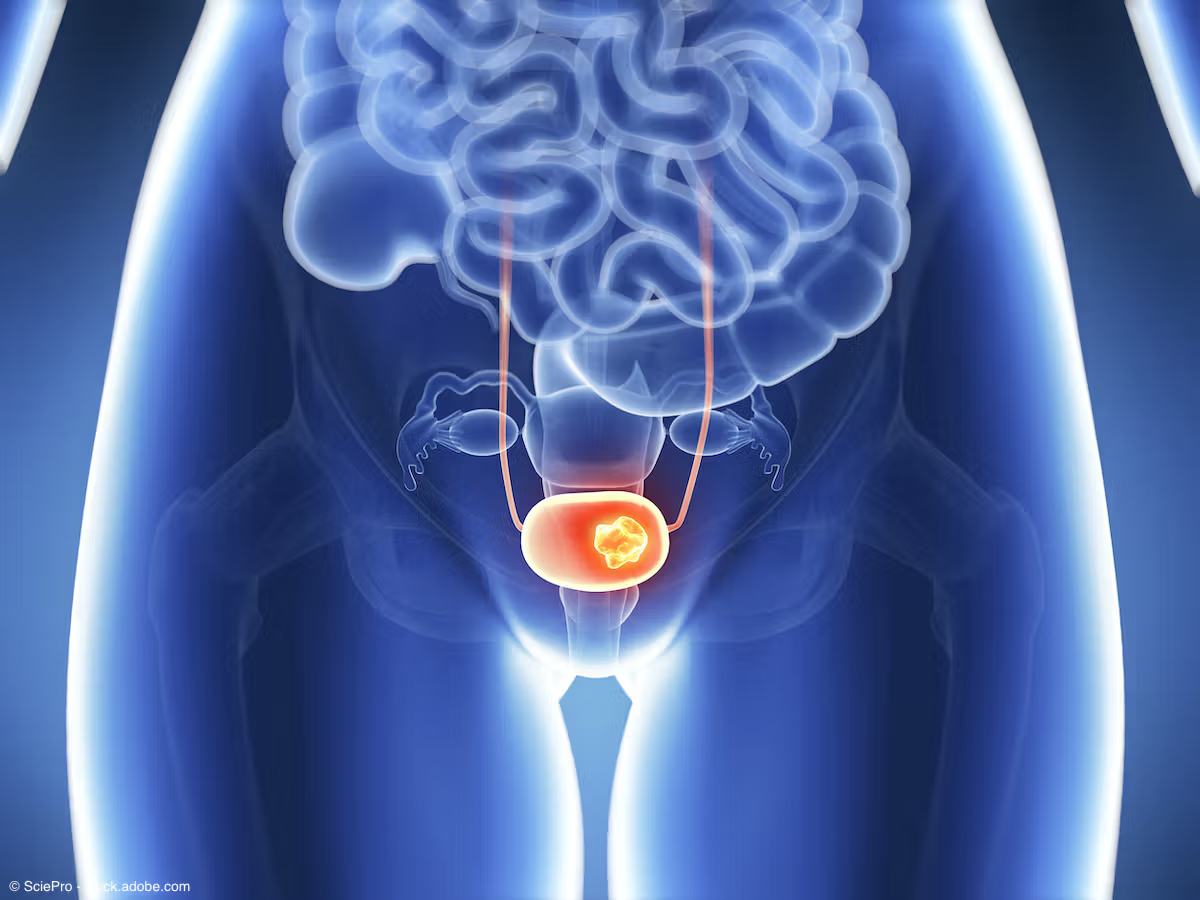Feature
Article
NMIBC Clinical Forums highlight novel therapies and treatment strategies
Author(s):
Key Takeaways
- Emerging therapies, including sasanlimab, nadofaragene firadenovec, and Anktiva, are being explored for NMIBC, with a focus on combination treatments to enhance efficacy.
- Clinical trials like CREST, POTOMAC, and PATAPSCO guide treatment decisions, emphasizing aggressive initial treatment for BCG-naive patients and alternatives for BCG-recurrent cases.
Two recent Clinical Forum discussions sought to examine how emerging therapeutic options and evolving treatment standards in non–muscle invasive bladder cancer affect clinical practices and patient outcomes.
On March 18, 2025 and March 19, 2025, Urology Times® hosted Clinical Forum events in Nashville, Tennessee, and Philadelphia, Pennsylvania, respectively. These roundtable discussions on managing bladder cancer brought together several urologists to explore innovative treatment strategies through a collaborative approach.What follows is a summary of these discussions.
This summary was AI generated and edited by human editors for clarity.
Clinical Forum 1 - Nashville
Gautam Jayram, MD

Gautam Jayram, MD, a urologic oncologist and director of the Advanced Therapeutics Center in Nashville, Tennessee, served as moderator for this forum. The conversation centered on 2 primary patient populations: those who receive a diagnosis of high-grade, high-risk non–muscle invasive bladder cancer (NMIBC) and those who face recurrence after receiving BCG therapy. The goal was to examine how emerging therapeutic options and evolving treatment standards affect clinical practices and patient outcomes.
Participants discussed clinical trial data that could guide treatment decisions. Specific trials mentioned included the CREST (NCT04165317), POTOMAC (NCT03528694), and PATAPSCO (NCT05943106) trials, which evaluate the effectiveness of intensifying treatment for patients who are BCG-naive. These studies investigate whether more aggressive initial treatment improves disease outcomes for patients with high-grade tumors. For patients who have previously received BCG and experienced recurrence, the discussion emphasized the use of clinical data to consider treatment options such as chemotherapy, immunotherapy, or surgical interventions.
The forum included discussion of the investigational agent sasanlimab. Participants noted that they were involved in early studies assessing its efficacy as a systemic therapy for patients who did not respond satisfactorily to BCG. The group expressed interest in exploring sasanlimab in combination with other therapies rather than using it as a standalone treatment.
When addressing BCG therapy, participants highlighted its importance as a first-line treatment for high-risk NMIBC. They discussed the standard 6-week course of intravesical BCG, followed by maintenance therapy. In light of clinical challenges, they addressed BCG shortages and explored alternatives, including intravesical chemotherapy options such as gemcitabine and mitomycin C. Some participants discussed the limited effectiveness of these therapies relative to BCG.
The efficacy of new treatments, such as joint regimens combining BCG with systemic agents like pembrolizumab (Keytruda), was a focal point. Participants referenced ongoing clinical trials assessing combination therapies that could enhance therapeutic outcomes by potentially improving response rates and delaying progression to muscle-invasive disease. There was particular attention on how these combinations could lead to better management of disease burden before proceeding to surgery.
The conversation also delved into the management of patients who are older or have significant comorbidities. These patients may not tolerate aggressive approaches. For them, clinicians discussed the potential for conservative management or selective use of local therapies, especially for unifocal, solitary high-grade lesions. This approach could involve careful monitoring or alternative therapies to avoid the morbidity associated with cystectomy.
Another treatment strategy focused on was the role of intravesical chemotherapy for low-grade or recurrent NMIBC cases. Participants discussed clinical guidelines advocating for the use of gemcitabine or mitomycin C in specific settings, such as in patients who experience recurrence after initial BCG therapy. The need for better patient selection based on risk factors was underscored, as some patients may benefit from less aggressive treatment.
The group also examined the role of ongoing clinical trials looking at novel therapeutics. New agents and innovations, such as targeted therapies, are increasingly becoming part of the treatment landscape for bladder cancer. For example, the introduction of antibody-drug conjugates and investigation into FGFR inhibitors highlight changing approaches in targeting the tumor-specific pathways to improve efficacy.
The participants also touched on the treatments nogapendekin alfa inbakicept (Anktiva) and nadofaragene firadenovec (Adstiladrin).Nadofaragene firadenovec is an intravesical gene therapy that utilizes interferon alpha to treat patients with BCG-unresponsive carcinoma in situ and is particularly geared toward patients who are not surgical candidates or for whom cystectomy is not an option. It is administered quarterly, which allows for less frequent treatments compared to traditional therapies.
Anktiva, on the other hand, was identified as an IL-15 superagonist acting as a cytokine treatment also delivered intravesically. This therapy is designed to work in conjunction with BCG, enhancing its immune response effects. Like nadofaragene, Anktiva is given once per week for 6 weeks followed by maintenance, and it aims to boost the immune response through additional stimulation. However, there are concerns surrounding the limited availability of BCG, which is necessary for its administration, affecting the initiation of treatment.
In managing NMIBC, the panel discussed the significance of proper tumor resection through transurethral resection of bladder tumor (TURBT) as a critical intervention in both diagnosis and management. Participants agreed that performing thorough resections is essential and that repeat TURBTs can help govern further treatment decisions, especially for pathology indicating high-grade or muscle-invasive disease.
The discussion emphasized the importance of a multidisciplinary approach, blending urology and oncology perspectives. The participants aimed to better integrate systemic therapies into traditional treatment pathways for patients with NMIBC and muscle-invasive bladder cancer, focusing on personalized management based on individual patient risk factors and tumor characteristics.
Clinical Forum 1 - Philadelphia
Guy T. Bernstein, MD, FACS

Guy T. Bernstein, MD, FACS, managing partner and practicing urologist at the Urology Health Specialists in Bryn Mawr, Pennsylvania and attending urologic surgeon at Bryn Mawr Hospital, served as moderator for this forum. One key point of discussion was the presentation of bladder cancer patients. Participants noted variability in the imaging practices of primary care physicians, where some patients are referred after extensive imaging, whereas others come with minimal preliminary diagnostics. This inconsistency underscores a need for standardized assessment protocols, particularly as referrals often lead to cystoscopy or more invasive procedures where tumors may unexpectedly be discovered.
A primary focus of the conversation was the management of NMIBC, particularly in the context of treatment options following BCG therapy. The participants discussed alternative treatments, including pembrolizumab.
The group also touched on the emergent approaches to patients who are BCG-naïve, where new therapies, such as nadofaragene firadenovec, are being utilized. Additionally, Anktiva was mentioned as another immunotherapy option being used, suggesting a trend toward integrating novel therapeutic agents in early-stage bladder cancer treatment paradigms.
Clinical trials play a vital role in assessing the efficacy of these new treatments. The group shared insights on participation in various studies, including the QUILT 2.005 trial (NCT02138734) and the SunRISe trials, which focus on both BCG-naïve and BCG-failure populations. The discussions highlighted the trend in oncology to move newer agents earlier in the treatment pathway, akin to strategies seen in advanced prostate cancer therapies. The strategy revolves around capturing a broader patient population early in their treatment journey, potentially leading to improved outcomes.
Moreover, the panel evaluated the evolving relationship between urology and medical oncology. As treatment options diversify, there is an increasing need for collaboration between these specialties. Medical oncologists are becoming more integral, especially as the complexity of therapy increases with the introduction of immunotherapies. The oncologist’s role in managing the adverse events of these therapies was a significant concern discussed by the attendees, who noted that some patients have experienced severe adverse effects, necessitating careful monitoring and management. This collaboration often happens in multidisciplinary tumor boards, where comprehensive management plans are formulated.
The conversation also covered the therapeutic landscape for patients who refuse cystectomy. It was recognized that a significant percentage of patients, driven by personal preferences or health concerns, opt for alternative therapies instead of undergoing surgery. The discussion provided insights into how these patients might be managed through alternative chemoradiation strategies, revealing the complexities and nuances that physicians must navigate in tailoring individual treatment plans.
As in the Nashville discussion, the group discussed sasanlimab. Cautious optimism was expressed about early data, which suggested that sasanlimab could offer a viable alternative for patients who have not responded well to traditional therapies, particularly in the context of BCG failures. The need for robust clinical trial data was emphasized, with the expectation that ongoing studies would provide further insights into the drug's effectiveness within the treatment landscape of bladder cancer.
The logistics of administering newer therapies, such as pembrolizumab, were discussed in terms of coverage complexities and patient eligibility, particularly for those in community settings. The challenge of transitioning patients from intravesical therapies to more systemic treatments was highlighted, with concerns regarding the comprehensive management of adverse events such as immunotoxicity. The forum underscored the importance of sharing expertise among health care professionals to ensure that patients receive the best possible care and that their treatment is managed effectively.
In conclusion, the forum captured the multifaceted nature of bladder cancer management in contemporary practice, showcasing a critical examination of existing therapies through the lens of participant experiences and emerging clinical insights. The interplay between innovative treatments, collaborative care models, and patient-centric approaches highlighted a dynamic landscape that is continually evolving as practitioners work to optimize outcomes for bladder cancer patients. The dialogue emphasized the necessity for ongoing discussions among clinicians to remain informed of advancements and effectively address the diverse needs within this patient population.

















